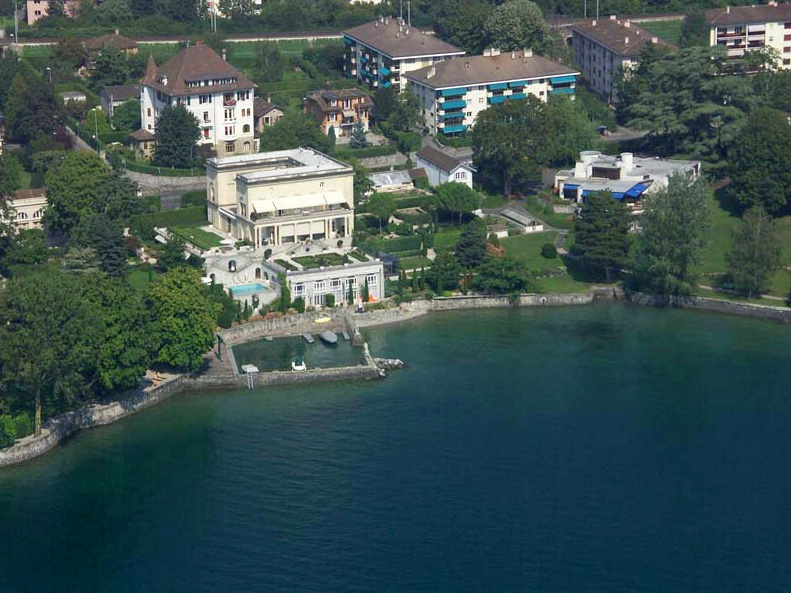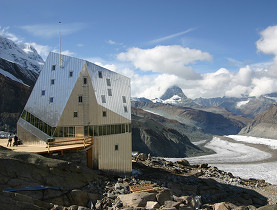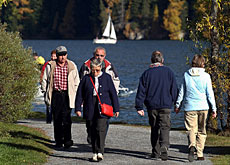Lake Geneva access vote could make waves

Residents of La Tour-de-Peilz in western Switzerland are set to vote upon a controversial plan to build a public footpath in front of luxury Lake Geneva properties.
This is just one of a number of ongoing waterway access disputes in Switzerland. It is estimated that just 50 per cent of the shores of lakes Zurich, Geneva and Constance are accessible to ramblers.
The pretty lakeside town of La Tour-de-Peilz on the Swiss Riviera between Vevey and Montreux is set to become an unusual battleground when its 10,500 residents decide on November 28 whether to make its waterfront accessible to the public.
The plan, which was launched in November 2008 and signed by 2,174 locals, proposes a two-kilometre path along its front, ensuring a continuous walkway between the lakeside towns of Villeneuve and Vevey.
For Gilbert Vernez, the local Social Democrat councillor behind the initiative, the issue is a simple fight between public and private interests.
“I have chosen my side and I want to promote the common good,” he told a local council meeting at the end of June.
But 28 villa owners and residents are up in arms about the idea and have formed a protest group, Sauvons nos rives (Save Our Shores).
Landowner rights
They say any footpath across their land totally disregards Swiss property rights.
“This property represents an entire life’s savings and a well-earned retirement,” said Isabelle Rinsoz, who inherited her lakeside home from her grandfather.
“If the project passes, certain owners will be expropriated, and will have to be reimbursed accordingly,” added Brigitte Fahrni Chiusano, a lawyer and local councillor.
The opponents also argue that a concrete path would endanger fish, birds and other wildlife living along the picturesque waterfront.
“We have the duty to protect this aesthetic heritage and its peace and calm, and not ruin it with new constructions like walls and fences that would disfigure the countryside,” said Rinsoz.
They claim the cost of the footpath – SFr3.6 million ($3.3 million), half of which would be paid by canton Vaud – is also too high and likely to rise with expropriation costs.
“Crucial” vote
For Victor von Wartburg, the president and founder of the Rives Publiques (Public Shores) association, the La Tour-de-Peilz vote is “absolutely crucial”.
“It’s a test case at communal level of great importance. It will help us enormously to force canton Vaud to open up legal [lakeside] walkways,” he told swissinfo.ch.
In 2000 canton Vaud adopted a plan to make Lake Geneva’s shorelines accessible to the public, but ten years later less than one kilometre of new lakeside paths had been built.
Rives Publiques claims that Swiss lakeshores and riversides have been part of the public domain for over 100 years.
“Everything for the rich”
“When it comes to stopping the illegal privatisation of the shores, the authorities do nothing for the general public and everything for the rich,” said von Wartburg.
“They use all kinds of excuses like protecting nature, security and nuisances to keep the general public away from the lakeside.”
The association says local authorities rarely apply the complex body of laws to return what has been “confiscated” by private landowners.
But this view is challenged by the Federal Spatial Development Office, which in 2008 declared Swiss residents could not claim right of access to lake and river waterfronts.
According to the government’s legal experts, federal legislation does say that access to lakeshores and riversides should be possible, but does not guarantee it.
Despite this, Von Wartburg remains convinced his group has watertight legal arguments.
“What they say is false and dishonest. According to jurisdiction, which they know, the waters, lakebeds and lakeshores are inseparable and form a whole, which is part of the public domain.
“If the federal authorities do not respect Federal Court judgments, it’s very serious and not at all democratic,” he said.
Federal initiative
Stéphane Lagonico, president of the Lake Geneva property owners association, denounced Rives Publiques’ approach as “excessive”.
“Only a small number of people want to walk long distances along the lake,” he told Swiss national radio, adding that there were already “numerous” points of access where people can walk around the lake.
Von Wartburg remains unperturbed and believes the public waterway access movement has the wind in its sails.
Rives Publiques is currently working on a federal people’s initiative to have public right of access to lakes and rivers written into the Swiss Constitution, which they hope to launch next year.
They are closely following lakeside access cases at Wädenswil, Schmerikon, Pfäffikon and Nuolen on Lake Zurich, and in canton Schwyz.
He is also in touch with Zurich branches of the Social Democratic Party, which recently launched a people’s initiative to secure wider public access to Lake Zurich.
And he has plans to highlight the cases of the residence of the US Ambassador to the United Nations, Betty King, at Mies in canton Vaud, and of the new Chinese embassy in Geneva, which he claims are “illegally” blocking public access to the lake.
According to a survey in 2007, 61.4% of Swiss people want unrestricted access to the lakeshores. This figure rises to 71.6% in French-speaking regions, compared with 58% in German-speaking areas and 80% for young people.
According to Rives Publiques, the public right of way around Swiss lakes is governed by a complex series of federal and cantonal laws and rulings, but the Swiss Civil Code cannot be overruled.
In June 1982 the people of canton Bern voted in favour of an initiative for public access to its lakes and rivers. But the law is only poorly implemented.
Only 50% of the shores of lakes Zurich, Geneva and Constance are said to be accessible to ramblers. Lakes Biel and Thun have sections of the shoreline which are accessible to the public.
Lake Neuchâtel serves as a model to others. A shoreline path exists from Marin-Epagnier to the canton Vaud border.

In compliance with the JTI standards
More: SWI swissinfo.ch certified by the Journalism Trust Initiative













You can find an overview of ongoing debates with our journalists here . Please join us!
If you want to start a conversation about a topic raised in this article or want to report factual errors, email us at english@swissinfo.ch.